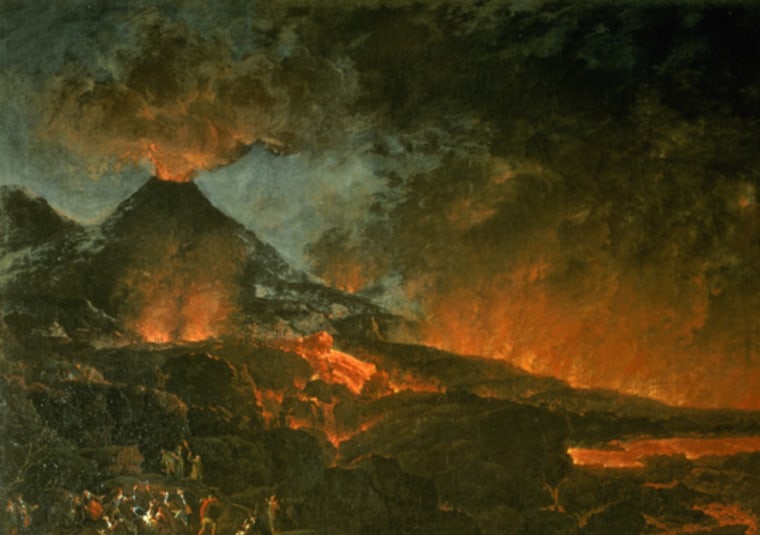Vesuvius, the Italian volcano that famously erupted in AD 79 and destroyed Pompeii, may awaken sometime in the future with even more catastrophic results, according to some experts who consider the volcano the most dangerous in the world.
The prospect, which could spell disaster for nearby Naples, a metropolis of 3 million people, is stirring up a vigorous debate among scientists and civil authorities on how to prepare, journalist Katherine Barnes reports for Nature News.
Part of the debate centers on the risk and scale of future eruptions. Some studies suggest the volcano is capable of massive eruptions, such as one some 3,800 years ago that triggered pyroclastic flows that buried Naples under 12 feet of ash and debris.
Other scientists argue that the eruptive nature of Vesuvius has changed over time and that smaller eruptions akin to one in 1631 are more the norm. That one killed 6,000 people but affected a much smaller area.
The course of disaster preparation planning depends on which scenario civil authorities choose as their basis. The worst case scenario would mean evacuating 3 million people from Naples. Other scenarios would delay such a complicated evacuation unless prevailing winds shifted and put it in harm's way.
"It's an extremely complex problem to solve," Augusto Neri at the National Institute for Geophysics and Volcanology's lab in Pisa told Nature News. "We simply do not know how the volcano works."
Barnes notes that the type of debate swirling around the potential catastrophic Vesuvius eruption is becoming more common in the wake of the earthquake and tsunami in Japan. These types of disasters, called black swans, are unlikely but potentially devastating.
Another example is how to prepare for a potential devastating quake along the Cascadia subduction zone along the west coast of North America. There, experts say, the science pointing to a future earthquake and tsunami is clear, but planning for it is lagging behind.
More stories on Mount Vesuvius:
- Experts say heat, not suffocation, killed Mount Vesuvius' victims
- Pompeii family's final hours reconstructed
- Ancient quake raises risk for modern Naples
- Eight dangerous volcanoes around the world
John Roach is a contributing writer for msnbc.com. Connect with the Cosmic Log community by hitting the "like" button on the Cosmic Log Facebook pageor following msnbc.com's science editor, Alan Boyle, on Twitter (@b0yle).
